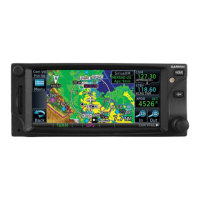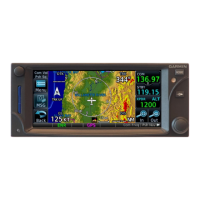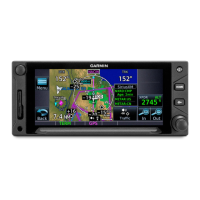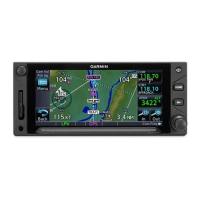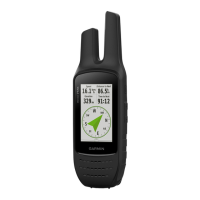What to do if my Garmin GTN 750 Data Link Receiver is not powered?
- DDavid CastilloJul 25, 2025
If your Garmin GPS Data Link Receiver is not powered, quickly check the circuit breakers to ensure power is being supplied to the receiver.






What to do if my Garmin GTN 750 Data Link Receiver is not powered?
If your Garmin GPS Data Link Receiver is not powered, quickly check the circuit breakers to ensure power is being supplied to the receiver.
What to do if Garmin GPS Data Link Receiver not functioning?
If your Garmin GPS Data Link Receiver isn't functioning, first ensure that the aircraft owner/operator has a SiriusXM Satellite Radio subscription. Also, verify that the SiriusXM subscription is activated. Check the circuit breakers to confirm the Data Link Receiver is receiving power. Finally, allow several minutes after powering up for all subscribed data to become available.
Why is my Garmin GTN 750 GPS Data Link Receiver not subscribed?
If the Data Link Receiver is not subscribed, ensure that the owner/operator of the aircraft in which the Data Link Receiver is installed has subscribed to XM.
Tune a standby COM frequency using the keypad.
Locate COM frequencies from recent, nearest, or flight plan lists.
Listen to standby COM frequencies while active is quiet.
Save up to 15 frequencies to a user-defined list.
Remove frequencies from the user list.
Tune a standby NAV frequency using the keypad.
Exchange active and standby frequencies.
Locate NAV frequencies from recent or nearest lists.
Access detailed audio panel controls for radios and intercom.
Choose COM radio for transmitting and receiving.
Listen to NAV radio audio for identification.
Monitor one COM radio while transmitting on another.
Enable or disable split mode for pilot and copilot audio.
Control the volume for cabin speakers.
Set intercom volume and squelch for pilot, copilot, and passengers.
Enter transponder codes and modes.
Review system status during power-up sequence.
Verify system status and database information after startup.
Confirm GPS status and position accuracy.
Set a direct-to course from current position to a new waypoint.
Direct-to a waypoint within an active flight plan.
Find and navigate direct-to the nearest airport.
Locate waypoints by name or city using the Find feature.
Create and navigate direct-to a waypoint on the map.
Set a specific course to intercept a VOR radial or fly a direct-to.
Build and store new flight plans for future use.
Load and activate a previously saved flight plan.
View the details of the current active flight plan.
Remove the current active flight plan.
Reverse the sequence of waypoints in the active flight plan.
Insert a new waypoint into the active flight plan.
Delete a waypoint from the active flight plan.
Activate a specific leg within the active flight plan.
Modify flight plan legs directly on the map.
Add airways to the flight plan.
Simplify flight plan display by collapsing airway waypoints.
Display all waypoints within a collapsed airway.
Delete an airway segment from the flight plan.
Set a specific course using OBS mode and manage waypoint sequencing.
Temporarily stop automatic waypoint sequencing.
Restart automatic waypoint sequencing.
Create and utilize custom waypoints for navigation.
Load departure procedures (DPs/SIDs) into the flight plan.
Activate a departure procedure for guidance.
Remove a departure procedure from the flight plan.
Load arrival procedures (STARs) into the flight plan.
Remove an arrival procedure from the flight plan.
Steps for loading and activating instrument approaches.
Remove an approach from the flight plan.
Switch to an alternative approach for an airport.
Activate a specific leg within an approach.
Navigate direct-to an intermediate fix within an approach.
Overview of supported RNAV approach types.
Key considerations for ILS, LOC, and VOR approaches.
Change CDI source from GPS to VLOC.
Follow missed approach procedures using GPS guidance.
Methods to load and activate a visual approach.
Configure the distance for the Visual button display.
Fly charted holds as part of procedures.
Remove a charted hold from a procedure.
Skip a hold by activating the leg to the next waypoint.
Define and add custom holds to flight plans.
Exit a hold and resume automatic waypoint sequencing.
Fly DME arcs as part of loaded procedures.
Fly radius-to-fix (RF) legs within procedures.
Activate VNAV guidance for descents.
Deactivate VNAV guidance.
Define altitude constraints for waypoints in VNAV.
Adjust existing VNAV altitude constraints.
Delete VNAV altitude constraints.
Review and modify VNAV descent profiles and FPA.
Set a default Flight Path Angle for VNAV descents.
Create parallel tracks offset from flight plan legs.
Remove a parallel track from the flight plan.
Utilize VNAV for descent management during approaches.
Navigate the Home page to access features.
Configure map overlays, orientation, and zoom levels.
Set map orientation and zoom controls for optimal viewing.
Personalize map data fields for quick access.
Control traffic display from ADS-B or TCAS.
Configure terrain and obstacle database display.
Manage weather overlays and display settings.
Display and interact with approach charts and airport diagrams.
Access information on nearest navigation aids and facilities.
Retrieve detailed information about any waypoint.
Connect to services like telephone and satellite music.
Access utilities for trip planning, fuel, calculators, and timers.
Review flight plan details like distance, ETE, and ETA.
Check estimated fuel status and requirements.
Calculate density altitude, TAS, and winds aloft.
Verify RAIM availability for trips outside WAAS coverage.
Set generic and trip timers with various options.
Create scheduled messages for reminders or events.
Temporarily disable touchscreen for cleaning.
Check GTN status, GPS, and external device connections.
Review GTN serial number, software versions, and database info.
Verify GPS receiver status and position accuracy.
Customize CDI scale, time format, keyboard, and other system settings.
Set up alerts for airspace and waypoint arrivals.
Select preferred units for measurement display.
Adjust the overall system audio volume.
Control the brightness of the GTN display.


